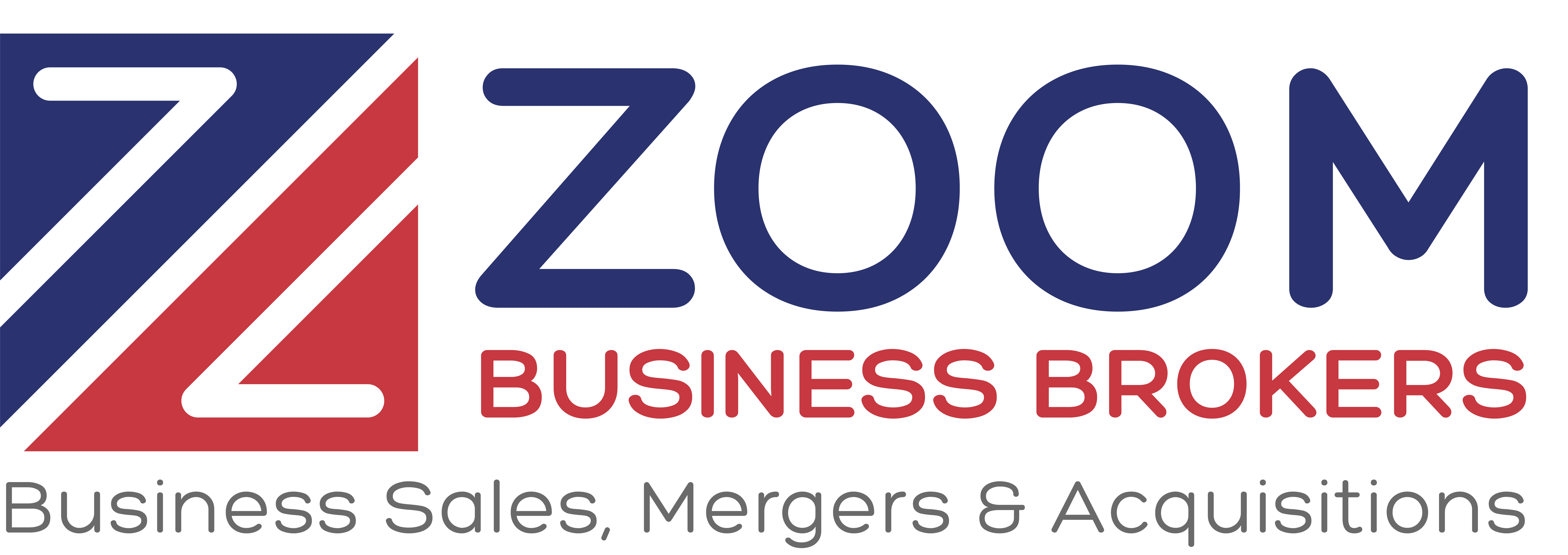
Defining Goodwill
You may hear the word “goodwill” thrown around a lot, but what does it really mean? When it comes to selling a business, the term refers to all the effort that the seller put into a business over the year. Goodwill can be thought of as the difference between the various tangible assets that a business has and the overall purchase price.
The M&A Dictionary defines goodwill in the following way, “An intangible fixed asset that is carried as an asset on the balance sheet, such as a recognizable company or product name or strong reputation. When one company pays more than the net book value for another, the former is typically paying for goodwill. Goodwill is often viewed as an approximation of the value of a company’s brand names, reputation, or long-term relationships that cannot otherwise be represented financially.”
Goodwill vs. Going-Concern
Now, it is important not to confuse goodwill value with “going-concern value,” as the two are definitely not the same. Going-concern value is typically defined by experts, as the fact that the business will continue to operate in a manner that is consistent with its intended purpose as opposed to failing or being liquidated. For most business owners, goodwill is seen as good service, products and reputation, all of which, of course, matters greatly.
Below is a list of some of the items that can be listed under the term “goodwill.” As you will notice, the list is surprisingly diverse.
42 Examples of Goodwill Items
- Phantom Assets
- Local Economy
- Industry Ratios
- Custom-Built Factory
- Management
- Loyal Customer Base
- Supplier List
- Reputation
- Delivery Systems
- Location
- Experienced Design Staff
- Growing Industry
- Recession Resistant Industry
- Low Employee Turnover
- Skilled Employees
- Trade Secrets
- Licenses
- Mailing List
- Royalty Agreements
- Tooling
- Technologically Advanced Equipment
- Advertising Campaigns
- Advertising Materials
- Backlog
- Computer Databases
- Computer Designs
- Contracts
- Copyrights
- Credit Files
- Distributorships
- Engineering Drawings
- Favorable Financing
- Franchises
- Government Programs
- Know-How
- Training Procedures
- Proprietary Designs
- Systems and Procedures
- Trademarks
- Employee Manual
- Location
- Name Recognition
As you can tell, goodwill, as it pertains to a business, is not an easily defined term. It is also very important to keep in mind that what goodwill is and how it is represented on a company’s financial statements are two different things.
Here is an example: a company sells for $2 million dollars but has only $1 million in tangible assets. The balance of $1 million dollars was considered goodwill and goodwill can be amortized by the acquirer over a 15-year period. All of this was especially impactful on public companies as an acquisition could negatively impact earnings which, in turn, negatively impacted stock price, so public companies were often reluctant to acquire firms in which goodwill was a large part of the purchase price. On the flip side of the coin, purchasers of non-public firms received a tax break due to amortization.
The Federal Accounting Standards Board (FASB) created new rules and standards pertaining to goodwill and those rules and standards were implemented on July 1, 2001. Upon the implementation of these rules and standards, goodwill may not have to be written off, unless the goodwill is carried at a value that is in excess of its real value. Now, the standards require companies to have intangible assets, which include goodwill, valued by an outside expert on an annual basis. These new rules work to define the difference between goodwill and other intangible assets as well as how they are to be treated in terms of accounting and tax reporting.
Before you buy a business or put a business up for sale, it is a good idea to talk to the professionals. The bottom line is that goodwill can still represent all the hard work a seller put into a business; however, that hard work must be accounted for differently than in years past and with more detail.
Copyright: Business Brokerage Press, Inc.
monkeybusinessimages/BigStock.com
Read More
A Deeper Look at Seller Financing
Buying a business requires a good deal of capital or lender resources. The bottom line is that a large percentage of buyers don’t have the necessary capital or lender resources to pay cash and that is where seller financing comes into play. The fact is that seller financing is quite common. In this article, we will take a deeper look at some of the key points to remember.
Is Seller Financing a Good Idea?
Many buyers feel that a seller’s reluctance to provide seller financing is a “red flag.” The notion is that if a business is truly as good as the seller claims it to be, then providing financing shouldn’t be a “scary” proposition. The truth is that this notion does carry some weight in reality. The primary reason that many sellers are reluctant to provide seller financing is that they are concerned that the buyer will be unsuccessful. This, of course, means that if the buyer fails to make payments, that the seller could be forced to take the business back or even forfeit the balance of the note.
However, it is important for sellers to look at the facts. Sellers who sell for all cash receive approximately 70% of the asking price; however, sellers receive approximately 86% of the asking price when they offer terms!
Seller Financing has a Range of Benefits
Here are a few of the most important benefits associated with seller financing: the seller receives a considerably higher price, sellers can get a much higher interest rate from a buyer than they can receive from a financial institution, the interest on a seller-financed deal will add significantly to the actual selling price, there are tax benefits to seller financing versus an all-cash sale and, finally, financing the sale serves as a vote of confidence in the buyer.
Clearly there are no guarantees that the buyer will be successful in operating the business. Yet, it is key that sellers remember that in most situations the buyers are putting a large percentage of their personal wealth into the purchase of the business. In other words, in most situations, the buyer is heavily invested even if financing is involved.
Business brokers excel in helping buyers and sellers discover creative ways to finance the sale of a business. Your broker can recommend a range of payment options and plans that can, in the end, often make the difference between a successful sale and failure.
Copyright: Business Brokerage Press, Inc.
Read More
Selling a Business? Be Aware of These Four Potential Issues
We’ve outlined below a few unexpected aspects of the business sale process that can pop up. Sometimes they severely impact the turnaround time of a sale. But if you can understand these potential issues better, you will be better prepared to try to circumvent them.
1. Do You Have Time on Your Side?
It’s helpful to use an intermediary who will assist with the filtering of prospects vs. “suspects.” However, the inclusion of yet another party, in addition to both the business seller and potential buyers, increases the amount of time required to navigate the process.
Sellers are typically unaware of the time and documentation needed to compile the required Offering Memorandum. Once completed, the seller must provide both the intermediary and potential buyer more time to review and propose meetings and pricing. In the interim, owners are faced with the challenge of keeping their business thriving.
2. Trying to Do Too Much
It’s not surprising when a company owner is also its founder that individual is typically used to making all of the decisions. That’s why business owners in the midst of selling will soon find themselves challenged with the desire to fully be a part of both the selling process and the running of the business.
Delegation to someone else, such as the Sales Manager, can be truly invaluable. Think of your top people as extremely valuable resources. They may have first-hand knowledge regarding additional concerns such as competition and potentially interested acquirers. Bringing in trusted employees to be part of the sales process can be tremendously beneficial.
3. Delays Due to Stockholders
When mid-sized, privately held companies are supported by minority stockholders, these individuals must be included in the selling process—however small their share may be. The business owner will need to firstly obtain their approval to sell by using the sale price and terms as influencers. Of course, issues such as competing interests, pricing disagreements, and even inter-family concerns may cause conflict and further delay the process.
4. Money Issues
Once sellers decide upon a price that they would like to see, it is sometimes difficult for them to accept or even consider anything less. After all, a business owner likely created the company and may have a strong emotional attachment.
Another factor that often interferes with a successful sale occurs when sellers instantly turn down offers because they don’t meet with their desired asking price.
That’s when the intermediary can often come in to salvage the deal. A business broker often serves as a negotiator. He or she can work out a deal that is structured in a manner that works for both sides.
Copyright: Business Brokerage Press, Inc.
Read More
Your Company’s Undocumented Worth
The valuation is a major factor that influences the overall selling price of the property. Business appraisals are based upon a multitude of criteria and indisputable records such as comparables, projections, discount rates, EBITDA multiples, and more.
While the appraiser may have all the information he or she needs, the business elements might be overlooked. That’s why it’s extremely helpful for business appraisers to first grasp the purpose of an appraisal prior to getting started. Unfortunately, the appraiser is often unaware of additional considerations that may enhance or even devalue a business’ overall worth.
Is There Unwritten Value?
Business owners generally agree that prospective buyers are mostly looking for quality in depth of management, market share, and profitability. Though undoubtedly more subjective than documentation, figures, and calculations alone, information regarding key business elements such as market, operations, post-acquisition, value drivers, and fundamentals is highly valued to potential buyers.
Here are some questions to consider regarding a couple of these crucial elements:
Is there an abundance of market competition?
Does pricing reasonably align with the demographic?
Are the company goals consistent with advancing technology?
Are there various and/or global means of reach and distribution?
Does the business have more potential beyond a niche?
What’s the company’s competitive advantage?
What are the strengths and weaknesses of its competitors?
Is there a great deal of alternative technologies?
Are there various vendors?
Is the company’s location convenient to its target audience?
Increased Success & Valuation
Successful businesses thrive due to company-wide values and consistent customer-centric efforts. In his book The 100 Absolutely Unbreakable Laws of Business, Brian Tracy summarizes this as “a company-wide focus on marketing, sales and revenue generation. The most important energies of the most talented people in the company must be centered on the customer. The failures to focus single-mindedly on sales are the number one causes of business failures, which are triggered by a drop-off in sales.”
Tracy continues by pointing out that trends may be the most pivotal consideration and bottom-line contributor to any given company’s success and, therefore, valuation. For 2017, projected trends include the increased use of video marketing, crowdfunding as a source of product validation, nutrition and fitness tracking products, the use of e-commerce, and the acquisition and training of remote employees.
Understanding Trends
Start-up companies are likely practicing as many current trends as possible within their limited funding in an attempt to establish market share, while mature companies are hiring millennials to keep their business hip to those same trends in an effort to protect their existing share. Business owners would benefit from studying and ultimately executing these current trends, as well as from acknowledging the successes and mistakes of their competitors.
Tracy suggests that daily conversations that encompass problem-solving, decision-making, and team collaboration are pivotal factors in making a company successful. And those performing all of these necessities? As Tracy reiterates, top companies have the best people.
Copyright: Business Brokerage Press, Inc.
Read More
Service Businesses Perform Highest When It Comes to Sales
Recently, Business Brokerage Press performed a survey of brokers across the country to see what sells at the highest rate, and what they discovered was very interesting. Retail business sold at 17%, food and drink related businesses at 14%, service oriented businesses sold at 25%, auto related businesses sold at 9%, manufacturing businesses sold at 16% and distribution businesses sold at 11%. Businesses labeled as “other” sold at 5% and professional practices at 4%.
What is a Service Business?
Looking at this gathered information, it is clear that “service type businesses” are very hot and doing quite well. The range for what is considered a service type business is, in fact, rather broad. It encompasses everything from a dry cleaner and hair stylist business to a massage therapy chain or dental practice. Just so long as a business is providing a service and doesn’t fall into another category, it falls under the “service oriented” banner.
Food and Drink Businesses
One of the next key nuggets of information from the survey is that food and drink businesses tend to perform quite well too. Food and drink businesses range from bars to sit down restaurants or fast food establishments. The simple fact is that people need to eat, and this truth is certainly reflected in the strong performance of food and drink businesses. The need for certain types of businesses may change with changing times and changing technologies, but food and drink remains a staple.
Eating, for example, isn’t a trend and the tradition of visiting a local bar or restaurant is very established. In fact, some of the oldest continuously operating businesses in the world are bars and restaurants. Those looking for a business that has some degree of built in stability and is likely to be at least partially immune to emerging trends will be well advised to consider food and drink businesses.
The Mindset of Today’s Buyers
When you are considering what types of businesses that buyers may find interesting it is important to pause and reflect on the likely profile of prospective buyers. Today, a large percentage of prospective buyers are well educated and bring a lot of experience to the table. In short, they are savvy and know what they want.
This combination of education and experience also means that they are open minded and potentially flexible regarding the type of businesses that they will consider. Most prospective buyers will, in fact, be open to a wide array of potential options. At the end of the day, the most important factor for most prospective buyers will be whether or not a business is profitable.
The majority of prospective buyers will not be making an emotional buy. Instead, due to their combination of experience and education, they are very likely to focus on profitability above all else. Of course, this fact underscores the importance of having your business ready to sell long before the first prospective buyer sees it.
Copyright: Business Brokerage Press, Inc.
Read More